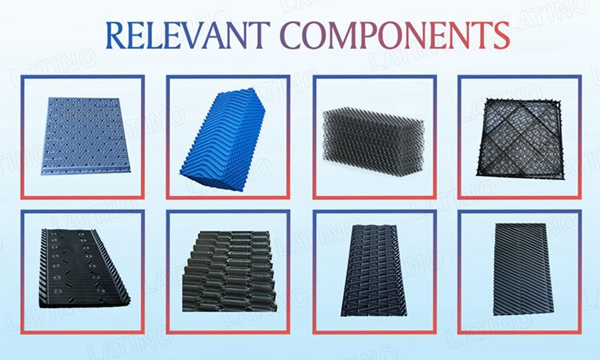
Understand the Importance Of Correct Cooling Tower Fill
Cooling towers play an essential role in many chemical plants. As with any other heat exchanger, maximizing efficiency from the standpoint of both equipment design and protection from fouling, scaling and corrosion is crucial. With cooling towers, cooling tower fill selection is a critical aspect in this regard. At first glance, high efficiency cooling tower film fill may seem the most desirable option. However, if poor water quality causes this cooling tower infill to rapidly foul and plug, it may incur excessive maintenance costs. So, here, we’ll examine the fundamentals of fill types and also look at important chemistry issues that influence selection. Proper makeup-water pretreatment may enable selecting a higher efficiency fill than otherwise possible.
Ambient temperature and humidity influence performance, and typically 65–90% of heat transfer in a cooling tower comes from evaporation of a small portion (1–3%) of the recirculating water. Thus, an underlying guideline for all the cooling towers is to enhance air/water contact. In the beginning, this was accomplished through the use of splash fill — a series of wooden slats placed in a staggered formation below the water spray nozzles. As water impinges upon the slats, it breaks into small droplets that increase the surface area.
Cooling tower fill has evolved significantly from that rudimentary splash fill design. Most cooling towers now utilize film fill to enhance air/water contact. Film fill, as the name implies, induces the cooling water to form a film on the material surface. The filming mechanism maximizes liquid surface area. A guiding principle behind fill design and selection “is to increase air-to-water contact, driving up convection and evaporative cooling while reducing pressure drop in the system”. Fills generally are made of polyvinyl chloride because of its low cost, durability, good wetting characteristics and inherently low flame spread rate.
Fill Selection
The choice of cooling tower fill design in large measure depends upon the fouling tendencies of the cooling water. Figure 2 illustrates a variety of fill designs ranging from modern splash fill to very high efficiency material.
The most basic and least expensive is plastic splash fill . An advancement on this technology is “wire frame” fill. In one type of wire-frame design, water film cascades on the strand surface; cooling occurs predominantly via film generation, with droplet generation only incidental. This fill typically comes in a modular cross-fluted design. The other wire frame design uses a multitude of integrated drip points to create a compact volume of droplets . These “modular splash” (M/S) fills usually have offset flute geometry and are inherently more fouling resistant than cross-fluted fills.
The others options consist of film fills. These have air/water passageways called flutes. A variety of flute configurations are available, with each reflecting a different tradeoff between thermal performance and fouling resistance.
Vertical film fills such as vertical flutes offer a straight path for water and air flow. Thermal performance is lower than that of higher efficiency designs but VF fill has excellent anti-fouling characteristics.
XF stand-off fill, which is made specifically for crossflow cooling towers, boasts a high specific surface area and moderate-to-good anti-fouling tendencies depending upon water loading


